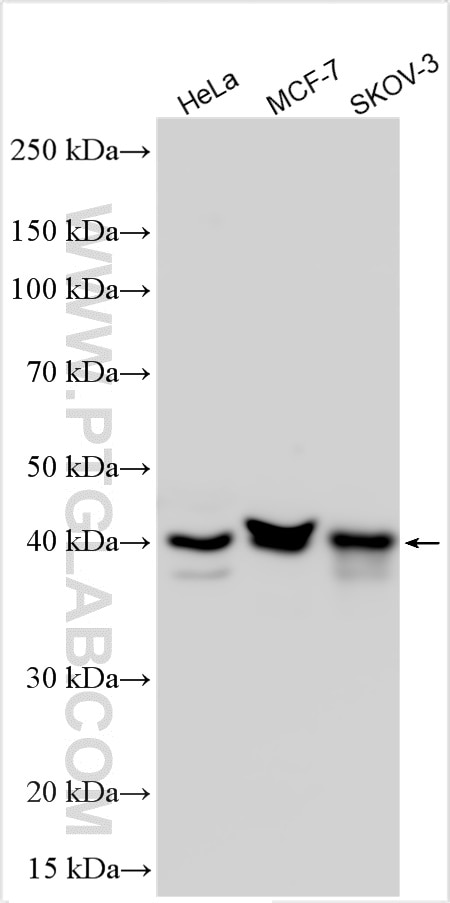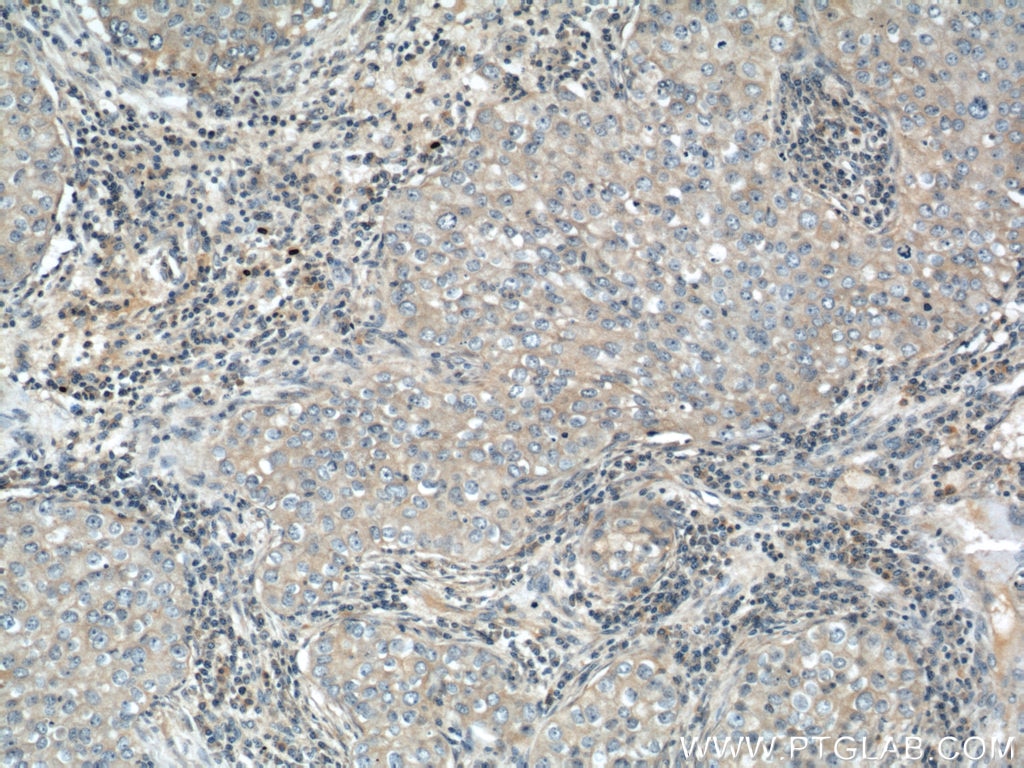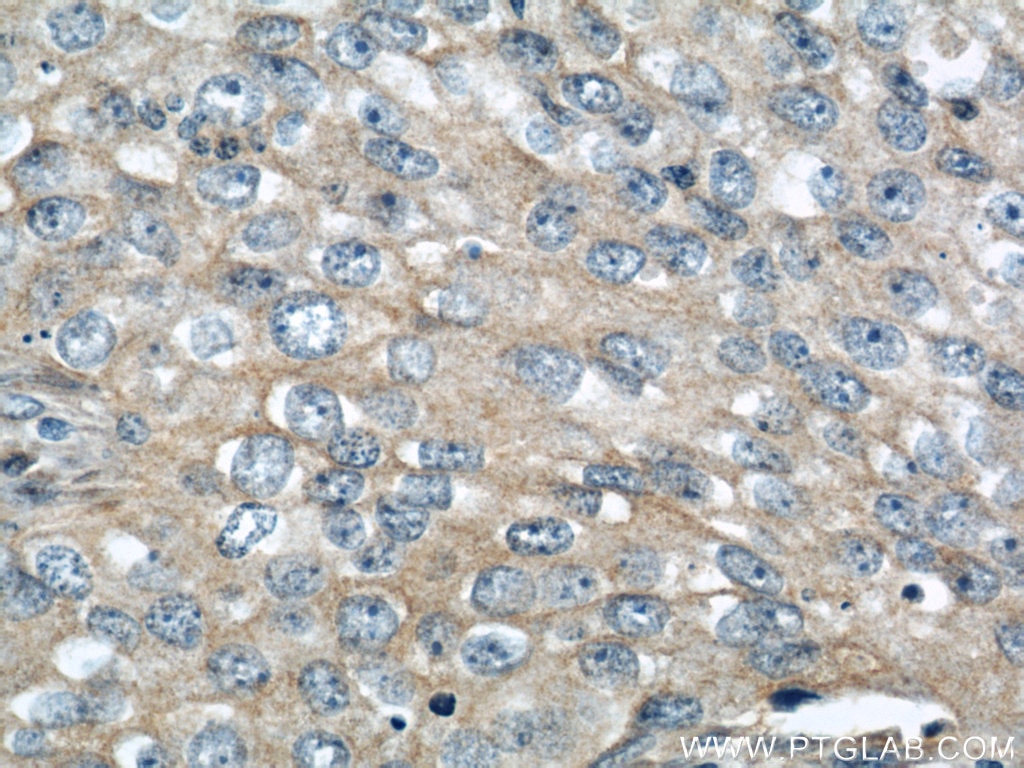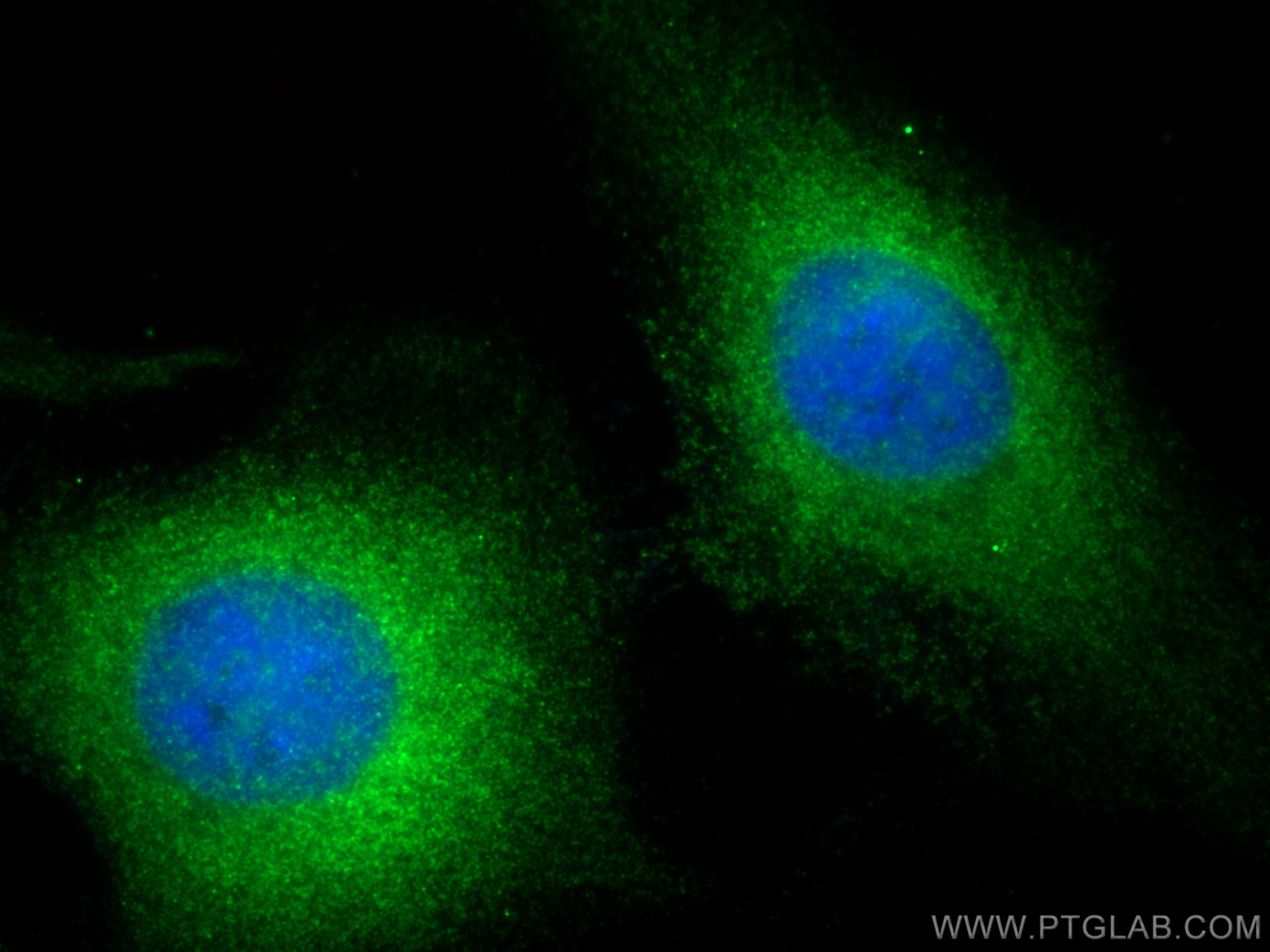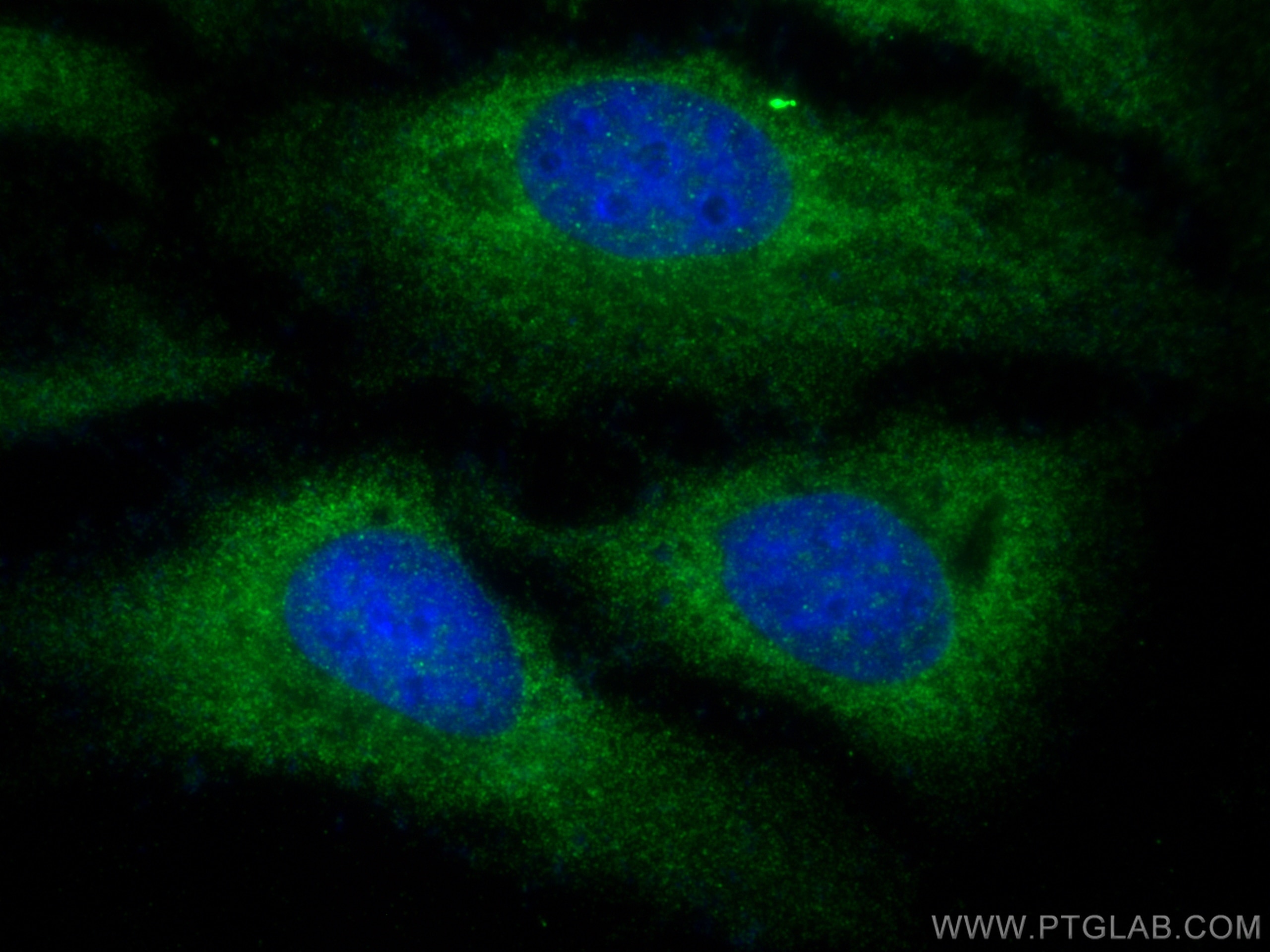Validation Data Gallery
Tested Applications
| Positive WB detected in | HeLa cells, MCF-7 cells, SKOV-3 cells |
| Positive IHC detected in | human breast cancer tissue, human colon cancer tissue Note: suggested antigen retrieval with TE buffer pH 9.0; (*) Alternatively, antigen retrieval may be performed with citrate buffer pH 6.0 |
| Positive IF/ICC detected in | HeLa cells |
Recommended dilution
| Application | Dilution |
|---|---|
| Western Blot (WB) | WB : 1:1000-1:8000 |
| Immunohistochemistry (IHC) | IHC : 1:20-1:200 |
| Immunofluorescence (IF)/ICC | IF/ICC : 1:200-1:800 |
| It is recommended that this reagent should be titrated in each testing system to obtain optimal results. | |
| Sample-dependent, Check data in validation data gallery. | |
Published Applications
| KD/KO | See 3 publications below |
| WB | See 26 publications below |
| IHC | See 10 publications below |
| IF | See 8 publications below |
Product Information
10189-2-AP targets IGFBP3 in WB, IHC, IF/ICC, ELISA applications and shows reactivity with human, mouse samples.
| Tested Reactivity | human, mouse |
| Cited Reactivity | human, mouse, rat, chicken |
| Host / Isotype | Rabbit / IgG |
| Class | Polyclonal |
| Type | Antibody |
| Immunogen | IGFBP3 fusion protein Ag0242 相同性解析による交差性が予測される生物種 |
| Full Name | insulin-like growth factor binding protein 3 |
| Calculated molecular weight | 32 kDa |
| Observed molecular weight | 32 kDa, 40-45 kDa |
| GenBank accession number | BC000013 |
| Gene Symbol | IGFBP3 |
| Gene ID (NCBI) | 3486 |
| RRID | AB_2123233 |
| Conjugate | Unconjugated |
| Form | Liquid |
| Purification Method | Antigen affinity purification |
| UNIPROT ID | P17936 |
| Storage Buffer | PBS with 0.02% sodium azide and 50% glycerol , pH 7.3 |
| Storage Conditions | Store at -20°C. Stable for one year after shipment. Aliquoting is unnecessary for -20oC storage. |
Background Information
Insulin-like growth factor binding protein-3 (IGFBP-3) contains a 27 amino acid putative signal sequence followed by a mature protein of 264 amino acids with 18 cysteine residues clustered near the N- and C-terminus. Accordingly, expression of the cloned IGFBP-3 cDNA in mammalian tissue culture cells results in secretion of the protein into the culture medium. IGFBP-3 shares high homology (33% amino acid identity) including conservation of all 18 cysteine residues with a smaller human IGF-binding protein (BP-28) identified in amniotic fluid. IGFBP-3 has one or more glycosylation sites with a protein core of ∼30 kDa. Western blots revealed that the 39-45 kDa IGFBP-3 fragment is a glycoprotein. (PMID: 23403918, PMID: 24926947, PMID: 19887447)
Protocols
| Product Specific Protocols | |
|---|---|
| WB protocol for IGFBP3 antibody 10189-2-AP | Download protocol |
| IHC protocol for IGFBP3 antibody 10189-2-AP | Download protocol |
| IF protocol for IGFBP3 antibody 10189-2-AP | Download protocol |
| Standard Protocols | |
|---|---|
| Click here to view our Standard Protocols |
Publications
| Species | Application | Title |
|---|---|---|
Theranostics Differential effect of cancer-associated fibroblast-derived extracellular vesicles on cisplatin resistance in oral squamous cell carcinoma via miR-876-3p
| ||
Proc Natl Acad Sci U S A Disruption of the AMPK-TBC1D1 nexus increases lipogenic gene expression and causes obesity in mice via promoting IGF1 secretion. | ||
Acta Physiol (Oxf) Podocyte apoptosis in diabetic nephropathy by BASP1 activation of the p53 pathway via WT1. | ||
Cancer Lett Choline-induced SLC5A7 impairs colorectal cancer growth by stabilizing p53 protein. | ||
PLoS Biol The glucose-sensing transcription factor MLX balances metabolism and stress to suppress apoptosis and maintain spermatogenesis. |
